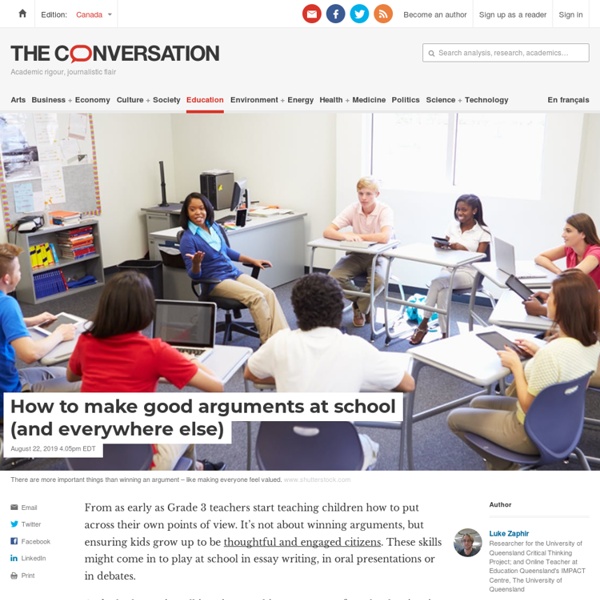edutopia
As a former middle school special education teacher and current tutor of middle and high school students, I often work with older children who struggle immensely with reading and writing tasks. This issue impacts them in every academic area and, if not addressed, can eventually affect their motivation to learn and to come to school. Many students I work with receive extra support in their English or language arts class, but then are on their own or receive less support in their other academic classes. I find that teaching these students reading strategies is vital to their success. However, when I began doing this, I found that often the reading strategies I use with my more advanced students—the Cornell note-taking system, SQ3R (short for “Survey, Question, Read, Recite, Review”), and annotation—were not entirely effective with students who struggle with literacy. A Reading Strategy for All Learners
More Talking in Class, Please
Providing consistent, structured time for students to participate in collaborative conversations can improve the overall classroom environment because once the need to sit quietly is replaced with opportunities to discuss course content, the amount of off-topic talking declines. Both small group and whole class discussions can provide these opportunities. Small Group Discussion Recommendations Teachers can facilitate quick small group collaborative conversations during class and provide immediate opportunities for students to verbally process their learning.
All About Asking Better Questions
Asking questions is such a basic tool of teaching, yet how many of us have ever been taught to ask good questions? As I started researching for this post, I realized how little I actually knew about asking questions. I asked hundreds of questions a day but had zero training. I know I’m not alone! Here’s the plan:
Common Core in Action: 10 Visual Literacy Strategies
Do you wish your students could better understand and critique the images that saturate their waking life? That's the purpose of visual literacy (VL), to explicitly teach a collection of competencies that will help students think through, think about and think with pictures. Standards Support Visual Literacy Instruction
Speed Sharing – a non-threatening alternative
Student writing is often read only by the student and teacher. Or, if it is shared, the student may be asked to read to the entire class, which is a nerve-racking experience for many pupils. We’ve found there is a better, quick paced, non-threatening way for students to share their writing and research with each other, whether it be a hand-written paper, a word-processed then printed document, or work done on a tablet device. This technique can be used with students aged nine or 10 through to adult learners. We call it ‘Speed Sharing’ and it has been a great success with many of our students of varying ages and grades.
The Path to CT
Few of us are effective critical thinkers—who has time? The good news, says Stever Robbins, is that this skill can be learned. by Stever Robbins Can you write a refresher on critical thinking? We business leaders so like to believe that we can think well, but we don't. Only one in seven even reaches the top 10 percent of quality thinkers.1 The rest of us haven't even read a book on critical thinking, much less practiced.
Anticipation Guides
Classroom Strategies Download a Graphic Organizer Blank Anticipation Guide Word Doc (120 KB)PDF (125 KB)
Student Led Discussion Strategies for Whole Class Discussion
Do you struggle with student led discussion strategies? Been there; done that! Before this school year started, as I was thinking of what I might focus on for a blog series, I kept coming back to the idea of classroom discussion. It’s the heart of what an ELA classroom is about. Our foundation is built on the exchange of ideas, the use of speaking and listening skills to process and further student learning. Yet, depending on the class, it can be like pulling teeth to get a discussion rolling.



